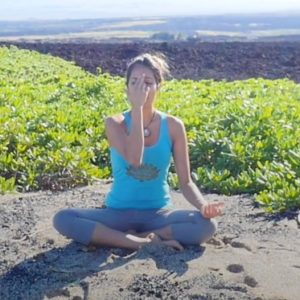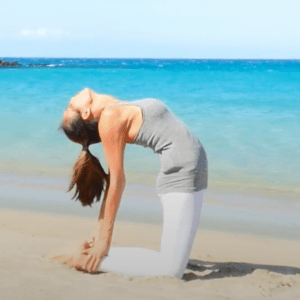Two poses for today are Staff Pose and Sphinx Pose
Staff Pose and Sphinx Pose
Staff Pose
Dandasana is the basic plank posture. The name comes from the Sanskrit word danda which means “stick” or “staff” and asana which means “posture” or “seat.”
Steps
- Lie down on your stomach
- Bring your hands towards your shoulders, keeping your palms on the ground
- Now, as you breathe in, push up your body forming a straight line. The arms are perpendicular to the ground and shoulders are right over your wrists, while the body is parallel to the floor
- Hold the pose and continue breathing
- As you exhale, come back to a sitting position and relax
Benefits
- Tones all the core muscles, including the abdomen, chest, and lower back
- Strengthens the arms, wrist, and shoulders
- Prepares the body for more challenging arm yoga poses.
- Strengthens spine muscles, lengthens it
- Improves posture
Sphinx Pose
Sphinx Pose is a gentle back bending posture that can be practiced either actively or passively.
Steps
- Lie on your stomach with your toes flat on the floor and forehead resting on the ground.
- Keep your legs close together with your feet and heels lightly touching.
- Stretch your hands in front of you with your palms facing downward and arms touching the ground. Set your elbows under your shoulders and forearms parallel to each other.
- On an inhale, slowly lift your head, chest,
and abdomen while keeping your navel on the floor. - Pull your torso back and off the floor with the support of your arms.
- Ensure that your feet are still close together and your head facing straight ahead.
- On an exhale, gently lower your abdomen, chest, and head onto the floor.
Benefits
- Strengthens the spine
- Stimulates the abdominal organs
- Expands the chest and shoulders
- Improves circulation
- Relieves stress




